AIR Discussions (September 3rd Week)
AIR SPOTLIGHT
INDUSTRIAL REVOLUTION 4.0

Disclaimer: Copyright infringement not intended
Context
- While inaugurating the two-day conference – Centre-State Science Conclave in Ahmedabad via video conferencing, Prime Minister Narendra Modi highlighted that the organisation of this conclave is an example of Sabka Prayas.
- The Prime Minister remarked “Science is like that energy in the development of 21st century India, which has the power to accelerate the development of every region and the development of every state. Today, when India is moving towards leading the fourth industrial revolution (IR 4.0), the role of India's science and people related to this field is very important. In such a situation, the responsibility of people in administration and policy making increases significantly.”
Industrial Revolutions
- IR 1.0: The first industrial revolution followed the proto-industrialization It started at the end of the 18th century to the beginning of the 19th. The biggest changes came in the industries in the form of mechanization. Mechanization was why agriculture started to be replaced by industry as the backbone of the societal economy.
- At the time, people witnessed massive extraction of coal along with the significant invention of the steam engine that created a new type of energy that later on helped speed up the manufacturing of railroads, thus accelerating the economy.
- IR 2.0: This revolution resulted in the creation of the internal combustion engine which started to reach its full potential. Other important points of the second industrial revolution were the development of steel demand, chemical synthesis and methods of communication such as the telegraph and the telephone.
- Finally, the inventions of the automobile and the plane at the beginning of the 20th century are the reason why, to this day, the Second Industrial Revolution is considered the most important one.
- IR 3.0: In the second half of the 20th century, we see the emergence of yet another source of untapped, at the time, energy i.e., nuclear energy.
- The third revolution brought forth the rise of electronics, telecommunications and, of course, computers. The third industrial revolution opened the doors to space expeditions, research, and biotechnology through new technologies i.e., Programmable Logic Controllers (PLCs) and Robots.
- IR 4.0: Industry 4.0 started at the dawn of the third millennium with the one thing everyone uses every day—the Internet. One can see the transition from the first industrial revolution rooted in technological phenomena to Industry 4.0 which develops virtual reality worlds, allowing us to bend the laws of physics.
- It builds on the developments of the Third Industrial Revolution. Production systems that already have computer technology are expanded by a network connection and have a digital twin on the Internet so to speak.
What efforts does India make for science-based development?
- India as a country miss the first two industrial revolutions because it was not a free nation and was ruled by colonial power.
- Being in the developing stage, India was not able to benefit from the 3rd industrial revolution, which was driven by technology and computers as India was building its institutes and capabilities from the nascent stage.
- In the digital era, the stage is set for the fourth industrial revolution, which will be powered by artificial intelligence (AI), machine learning and other scientific technologies.
- The Government of India is trying to ensure that the country should not miss this revolution and hence trying to build an ecosystem for research building and innovation facilities. The government even asked to build collaboration between state-central government and scientific institutions.
- Therefore, the government is emphasising acknowledging and celebrating the new scientific development. And it ensures that no talent, especially from the scientific sector should travel and settle outside India.
Prime Minister asked to build collaboration between the centre-state governments and scientific community to frame model policies that meet local needs such as affordable housing, and climate resilient agriculture and to boost the circular economy through waste processing as science is the provider of ease.
The innovation in science will promote ease of living on various fronts in the long run
- Countries across the world have focussed on innovations in the transport sector, aviation sector, and power sector. India, however, apart from this development is trying to ensure that the people who are at the last leg of the society, especially agricultural farmers should become equal beneficiaries of such innovations.
- For example, the Digital India Campaign is not only for the big corporates but also for the lower strata of society by giving them ease of delivery in public services, single window clearance, direct benefit transfer in Jan Dhan account, etc.
- Similarly, on the education front, a student can attend a lecture from a far-off village online through digital media. Hence, we can conclude that the development of technology will bring ease to all sections of society.
Prime Minister also highlighted that, unlike in western countries, the work of Indian scientists was not given due recognition in the past which led to a large section of society becoming indifferent towards science.
With a new approach can science become part of Indian society?
- India after independence strongly focused on a strong army and strong agricultural-based economy and hence adopted the tagline of ‘Jai Jawan – Jai Kisan’. In the third industrial revolution, India changed its tagline to ‘Jai Jawan, Jai Kisan, Jai Vigyan’
- The government of India now focus on and celebrate research and innovation and accordingly changed the tagline to ‘Jai Jawan Jai Kisan Jai Vigyan Jai Anushadhan’.
- The new focus is imperative and demands to have enough facilities like world-class infrastructure, the convenience of business and the ecosystem for research available in India. This will ensure India’s best minds who are currently working in Google, Twitter, Facebook, etc. work and stay in India.
- Such measures will help India to leapfrog into the fourth industrial revolution and become a global powerhouse of research and innovation and it will thus benefit every section of the society.
There has been a significant increase in investment in science & technology and the focus of the government. This was evident as India jumped to 46th position from 81st in Global Innovation Index in the last six years and India is also leading in start-ups with more than 107 unicorns and 77,000 start-ups.
Will such momentum fill it with the government’s renewed push for science and innovation?
- The indigenously built Co-Vaccine for COVID-19, though, initially was not approved by the World Health Organisation (WHO), but at present, it is considered the most risk-free vaccine that the world has acknowledged. Such success can be achieved by showing confidence in the scientist from the government by building the required infrastructure.
- Similarly, the space sector in India has reflected the confidence of the government in the Indian scientific community.
- The 50% increase in patent registration happened over the last seven years in India. The encouragement at the local level gave impetus to the spirit of innovation in India.
- The development of IT hubs in states like Karnataka and Telangana is an example of collective and collaborative federalism, where the centre is doing everything possible in their hand to support states and to build an ecosystem which will celebrate success.
- Such kind of encouragement help pushes science and innovation in the country and will thus fill the required momentum.
India has started several initiatives like Atal Innovation Mission (AIM) wherein more than 75 lakhs students are connected with nearly 10,000 Atal Tinkering Lab (ATL) in schools across the country and the scholarships provided to more than 50 lakhs to complete their PhDs.
Initiatives like scholarships are crucial for India
- India had an era where every student was trying to be an MBA or Chartered Accountant. But now the government is trying to give a boost and encouragement to students to take up science.
- The objective here is to expose students to science (via. Atal Tinkering Labs) at an early stage to develop their interest in the field and to pursue careers in the same. Providing scholarships, infrastructure, and educational facilities will encourage them to not just study but also to work in India.
- Government under the Make in India campaign is also trying to give preference to Indian innovative products against foreign ones. Thus, it is trying to commercialise the same.
- By developing such kind of ecosystem, India trying to make students the driver of the fourth industrial revolution.
Where can we see India in the global ecosystem of IR 4.0?
- In the last years, every big corporation like Microsoft, Google, Adobe, etc are led by Indians. Even one out of every ten unicorns is in India.
- Such figures reflect that Indians are capable of leading the world digitally. By building infrastructure and encouraging students in a decade or two Indian talents working in Indian companies will serve the world.
- And India with enough tools and technology will help increase its military export. Cyber defence at present is one of the fastest growing industries in the world. India already has a large pool of talent in the software and IT sector which can be transformed by transitioning into cyber defence and cyber security.
The demographic dividend, data availability at affordable prices, and India's vast domestic market are good indicators. However, lingering structural challenges are hampering India's future potential. The democratic nature of technology may be able to assist Indian businesses in overcoming their legacy issues and becoming globally competitive. To secure India's active involvement in the fourth industrial revolution, it will be necessary to restructure some vital domestic industries and strengthen institutional capability.
https://newsonair.gov.in/Spotlight.aspx#
https://t.me/+hJqMV1O0se03Njk9
NEWS IN BRIEF: PRELIMS SPECIAL
India-Egypt
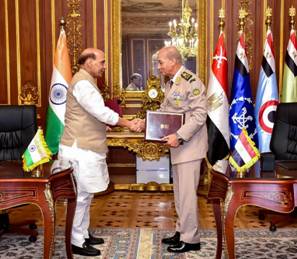
Disclaimer: Copyright infringement not intended
Context
- Defence Minister Rajnath Singh recently held a bilateral meeting with Egyptian counterpart General Mohamed Zaki in Cairo. Both agreed to identify proposals for expanding cooperation between the defence industries of the two countries in a time-bound manner.
The outcome of the meeting
- Both sides discussed steps to strengthen defence ties and reached a consensus to enhance the conduct of joint exercises and exchange of personnel for training, especially in the field of counter-insurgency.
- The two Ministers also exchanged views on regional security and acknowledged the contribution of India and Egypt to peace and stability in the world.
- They also signed a Memorandum of Understanding (MoU) on cooperation in the field of defence to pave the way for enhancing defence cooperation across all sectors of mutual interest.
- Singh has also invited his Egyptian counterpart to the India-Africa Defence Dialogue and IOR Defence Ministers’ Conclave scheduled to be held as part of the 12th Defence Expo in Gandhinagar next month.
https://t.me/+hJqMV1O0se03Njk9
Directors of IITs
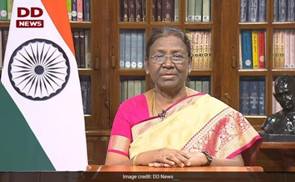
Disclaimer: Copyright infringement not intended
Context
- President Droupadi Murmu has cleared the appointments of Directors to eight Indian Institutes of Technology (IITs).
Directors appointed
- IIT, Madras Professor Seshadri Sekhar has been appointed as Director of IIT, Palakkad while another IIT, Madras Professor Shreepad Karmalkar will be the new Director of IIT, Bhubaneshwar.
- IIT, Kharagpur's Venkayappaya R. Desai has been appointed as the Director of IIT, Dharwad while IIT, Dharwad Director Pasumarthy Seshu has been given the responsibility of Director of IIT, Goa.
- IIT, Bhilai Director Rajat Moona has been named as the Director of IIT, Gandhinagar.
- N. Satyanarayana will be the Director of IIT, Tirupati, Rajiv Prakash will be the Director of IIT, Bhilai while Manoj Singh Gaur will be the Director of IIT, Jammu.
https://t.me/+hJqMV1O0se03Njk9
Global Fintech Conference 2022
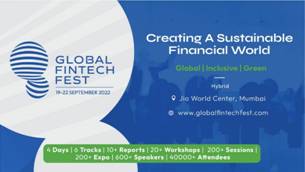
Disclaimer: Copyright infringement not intended
Context
- While addressing the Global Fintech Conference in Mumbai, Finance and Corporate Affairs Minister Nirmala Sitharaman said that India is moving very fast on solar and wind energy and the government is going ahead with its commitment to the promotion of renewable energy.
About Global Fintech Conference (GFF) 2022
- The third edition of Global Fintech Fest is organized by the National Payments Corporation of India (NPCI), Payment Council of India (PCI), and Fintech Convergence Council (FCC).
- It will be a hybrid event, September 19th-22nd, 2022, at the Jio World Convention Centre in Mumbai.
- The theme for GFF 2022 is 'Creating A Sustainable Financial World - Global | Inclusive | Green'.
- The event will also be broadcast live to the world via a fully interactive virtual platform.
- The objective is to create the world's largest fintech event, showcase India's unique affordable, inclusive, sustainable and equitable model for global fintech leadership, and generate thought-provoking content and shared learning opportunities for the fintech ecosystem across the world.
- This year marks the 75th year of India's independence, India has made exceptional progress in fintech adoption and is today a role model for the entire world.
- As India prepares to take the G20 leadership in the coming year, GFF2022 will showcase India as a dominant fintech thought leader and demonstrate India's fintech ecosystem to the world, creating solutions for 6 billion global consumers and driving financial inclusion adoption for the 1.4 billion unbanked adults at an even higher pace.
https://t.me/+hJqMV1O0se03Njk9
India-CELAC Quartet Meeting
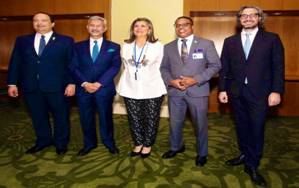
Disclaimer: Copyright infringement not intended
Context
- External Affairs Minister S Jaishankar held talks with his UAE, Indonesian, Egyptian and Cuban counterparts in the India-CELAC Quartet Meeting held on the sidelines of the UN General Assembly (UNGA) in New York.
Meetings
- During his meeting with UAE Foreign Minister Abdullah bin Zayed Al Nahyan, Dr Jaishankar reviewed the gamut of bilateral strategic partnerships between the two nations.
- Dr Jaishankar also appreciated UAE Foreign Minister's assessments and insights on the global situation.
- External Affairs Minister Dr S Jaishankar met President of the 77th session of the United Nations General Assembly Csaba Kőrösi at UN headquarters. He congratulated Mr Kőrösi on his priorities for UNGA 77th session.
- Dr Jaishankar assured him of India’s fullest support. They discussed the criticality of the SDG agenda for global progress. The External Affairs Minister shared Indian experiences in that regard.
- The External Affairs Ministry said that both sides expressed satisfaction at revitalizing the India-CELAC forum. They expressed happiness at the growing engagements of India with Latin American countries. They also reviewed the entire spectrum of India-CELAC relations.
About India-CELAC Quartet Meeting
- India-CELAC (Community of Latin American and the Caribbean States) Quartet Meeting was held on the sidelines of UNGA in New York on 19 September 2022 under the pro-tempore presidency of Argentina.
- Indian side was led by External Affairs Minister (EAM), Dr S Jaishankar.
- The CELAC Quartet was represented by Foreign Minister of Argentina Mr Santiago Cafiero, Foreign Minister of Guatemala Mr Mario Adolfo Bucaro Flores, Foreign Minister of Trinidad and Tobago Dr Amery Browne and Vice Minister for Multilateral Affairs of Colombia Ms Laura Gil Savastano.
https://t.me/+hJqMV1O0se03Njk9
Asia-Pacific Institute for Broadcasting Development: AIBD
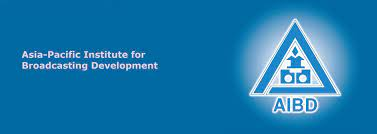
Disclaimer: Copyright infringement not intended
Context
- Union Information and Broadcasting Minister Anurag Thakur have recently addressed the meeting of the Asia-Pacific Institute for Broadcasting Development – AIBD in New Delhi.
- The Minister highlighted the challenges posed to journalism concerning fake and paid news.
About Asia-Pacific Institute for Broadcasting Development: AIBD
- The Asia-Pacific Institute for Broadcasting Development (AIBD) was established in August 1977 under the auspices of the United Nations Educational, Scientific and Cultural Organisation (UNESCO).
- It is a unique regional inter-governmental organisation servicing countries of the United Nations Economic and Social Commission for Asia and the Pacific (UN-ESCAP) in the field of electronic media development.
- It is hosted by the Government of Malaysia and the secretariat is located in Kuala Lumpur.
- The AIBD is mandated to achieve a vibrant and cohesive electronic media environment in the Asia-Pacific region through policy and resource development.
- The International Telecommunication Union (ITU), the United Nations Development Programme (UNDP), and the United Nations Educational, Scientific and Cultural Organisation (UNESCO) are the founding organisations of the Institute and they are non-voting members of the General Conference.
https://t.me/+hJqMV1O0se03Njk9




1.png)
